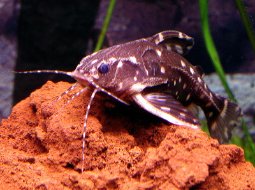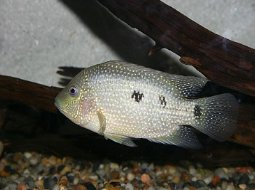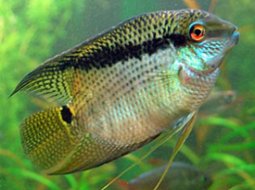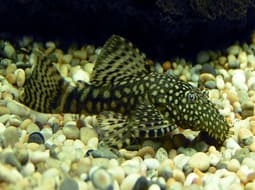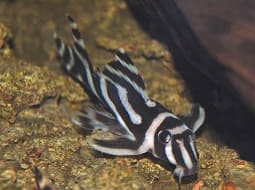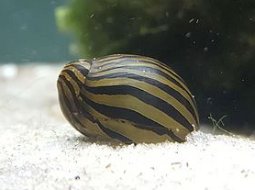
Loading Aqualapp ...
Care and Compatibility of Satena Pike Cichlid - Crenicichla strigata Günther
Introduction
The Crenicichla strigata Günther, commonly known as Satena Pike Cichlid, is a species of cichlid native to South America. It is characterized by its elongated body and distinctive vertical black stripes on a yellow or golden background. Males are usually larger and more colorful than females. They are territorial and aggressive fish, so it is recommended to keep them in adequately sized aquariums and provide them with enough hiding places and structures for them to establish their territory.
Behavior
The Satena Pike Cichlid is a territorial and aggressive fish. It is recommended to keep them in adequately sized aquariums for them to establish their territory. They enjoy having hiding places and structures in the aquarium where they can take refuge and explore. They are active and fast-swimming fish and can display aggressive behaviors towards other fish in their territory. Care should be taken when selecting tank mates to avoid conflicts. Maintaining good water quality and performing regular water changes are key factors for their well-being.
Sexual Dimorphism
Sexual dimorphism in Crenicichla strigata is minimal and difficult to distinguish. Both males and females have a similar appearance. However, during the breeding season, they may exhibit more pronounced territorial and courtship behaviors.
Reproduction
The Satena Pike Cichlid reproduces by laying eggs. They form monogamous pairs and care for and protect their egg clutch and fry. Males build nests in suitable substrates such as caves or rock crevices and attract females to deposit eggs. Both parents participate in cleaning and ventilating the eggs and protecting the clutch from other fish. After hatching, the parents continue to protect and care for the fry. It is important to provide a suitable environment with enough hiding places and structures in the aquarium for the safe growth of the fry.
Aquarium Conditions
Crenicichla strigata is a South American fish that requires a spacious aquarium with abundant vegetation and hiding spots. It prefers slightly acidic and well-oxygenated water. Aquarium décor should include rocks, driftwood, and sturdy plants. Maintaining water quality is crucial and providing a varied diet.
Feeding
The Satena Pike Cichlid is a carnivorous fish that primarily feeds on live or frozen prey. Suitable food items include small fish, shrimps, insect larvae, and other protein-rich foods. It is important to provide a varied and balanced diet to ensure their growth and health. Overfeeding should be avoided, and maintaining good water quality in the aquarium is crucial.
Complexity
Caring for Crenicichla strigata can be moderately challenging. They are territorial fish and can be aggressive towards other fish, especially during breeding and territory defense. It's recommended to keep them in pairs or large groups to distribute aggression. They require a balanced diet and regular aquarium maintenance.
In case you need more help, or if you want to know into any topic related to the Crenicichla strigata Günther (Satena Pike Cichlid) and even any other species you can use the forums to ask what you need.
To do an analysis more detailed about coexistence and behavior of Crenicichla strigata Günther (Satena Pike Cichlid) use the Aquarium simulation tool, if you do this you can test different ways to combine the Satena Pike Cichlid with other fishes giving the dimensions and space on you aquarium, on this way you can known the optimal configuration for keep the fishes that you want.
You can also find out the 22 species compatible with the Crenicichla strigata Günther (Satena Pike Cichlid) can live together.
Note: The parameters of the water such as PH and temperature are also used to calculate the compatibility of the species.
Compatible species (22)
Compatible (3 Species)
Compatible without any restriction
Similar Sizes (2 Species)
They can coexist if they are the same size or very similar sizes, it does not work in all cases, there may be exceptions.
With Reservation (11 Species)
Compatible in some cases, it depends on the nature and personality of the fish.
Las especies territoriales por lo general pueden convivir con especies protegidas con coraza, ya que no pueden hacerles daño por su dura piel, lo que si hay que tener en cuenta es tener un acuario con dimensiones favorables para que cada pez pueda delimitar un territorio, ya que la mayoría de peces acorazados son también peces de fondo y les gusta estar buscando lugares donde ocultarse.
Showdown over territory (3 Species)
Fish can live together as long as the space is spacious enough to delimit a territory, otherwise there may be aggressions for competing for the territory.
Considerable size difference (3 Species)
They can coexist while they are similar in size or the size difference is not very abysmal, since as the fish grows it increases the chances of eating its partner that did not grow much.
Satena Pike Cichlid
Crenicichla strigata Günther
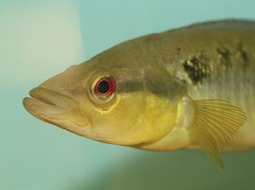
- Ph: 6.5 - 7.5
- Temperature (c°): 27 - 28
- Measures: 30 cm - 35cm
- Aquarium Capacity:
175 Liters - 46 Gallons - Alimentación: Carnivores, Omnivores
- Colores: Black, Gris, Yellow
- Comportamiento: Semi Aggressive, Territorial
- Habitad: American
- Preferencias del Acuario: Logs, Natural plants, Rocks
- Tamaño: Big
- Taxonomía: Cichlids, Fish
- Tipo de Agua: Sweet water
- Velocidad de nado o movimiento: Normal
- Zona de Nado: Swim in the middle of the aquarium


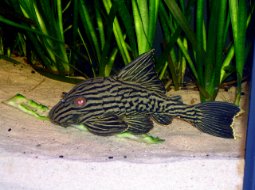
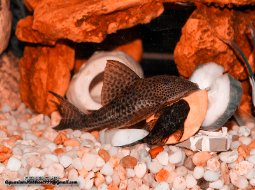
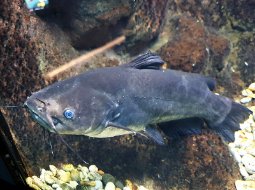

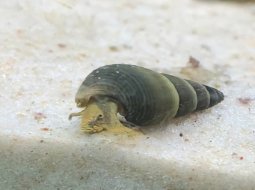

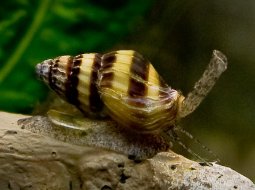
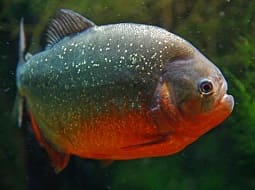

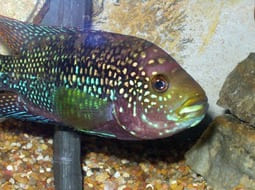
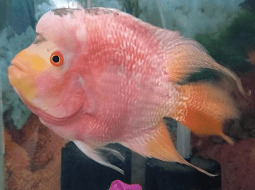
.jpg)

